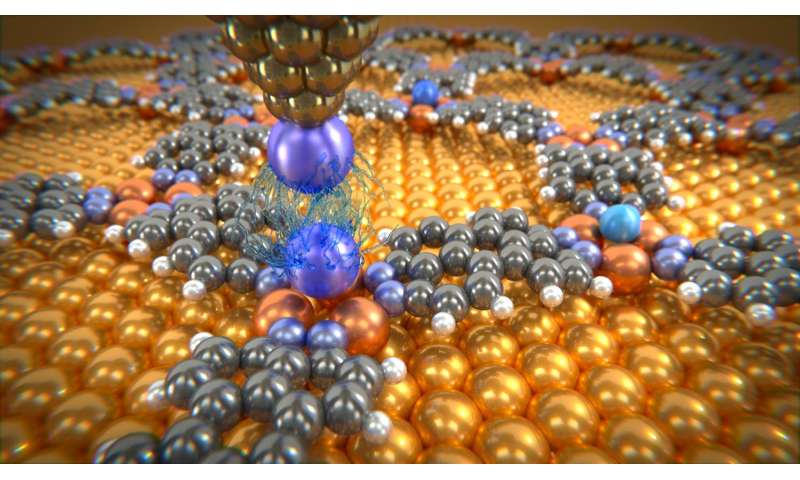Best of Last Week—Controlling entangled atoms, excess folic acid causing autism and cells that retain memory of injury

(ScienceX)—It was another good week for physics as a team with the University of Basel and the Swiss Nanoscience Institute announced that they had measured van der Waals forces of individual atoms using single noble gas atoms in a molecular network. Also, another team working at Washington University in St. Louis conducted experiments that suggested it might be possible to control atoms entangled using emitted light, via manipulating detection—they are looking at the wave state rather than the particle state of light.
In space news, a new study supports natural causes, not alien activity, to explain a mystery star's behavior—a team at Vanderbilt found that contrary to reports by some star gazers, star KIC 8462852, aka Tabby's star, is not home to alien beings; the apparent dimming over the last century, they report, was due to changes in instrumentation, not aliens sucking the energy out of the star to build a giant structure, as some have suggested. Researchers with the Kepler mission announced the largest exoplanet collection ever discovered—1,284 new planets—more than doubling the number of known confirmed planets from the space probe. And a team with members from several institutions in the U.S. and one in Poland suggested that a group of exoplanets' orbital arrangement may point to planets migrating in solar systems—four of the planets in the star system Kepler-223, they found, appear to be captured in an orbital arrangement that planets in our own solar system broke away from in the early years of the solar system. An international team of researchers reported that their Magnetospheric Multiscale mission was the first to observe a key interaction between the magnetic fields of the Earth and the Sun—a magnetic reconnection event.
In other news, a team with members from the U.S. and the U.K. reported on new evidence that showed humans settled in the southeastern U.S. far earlier than previously believed—bones found in a Florida river suggested people lived there approximately 1,500 years earlier than has been previously thought. And in a headline-making study, a team of researchers looked into whether too much folic acid is a cause of autism. They suggest it might be if an excess amount is taken. Pregnant women are still advised to take folic acid supplements. Also, a team of researchers with the University of Hawai'i at Mānoa offered new estimates of the probability of a mega-earthquake in the Aleutians—their data suggested that there is a 9 percent chance that a very strong quake will occur in the region within the next 50 years.
And finally, if you are one of the millions of people who continue to experience pain long after an injury has healed, researchers at King's College may have discovered why, as they report on cells that carry 'memory' of injury, which could reveal why chronic pain persists even after it seems like it should not.
© 2016 ScienceX